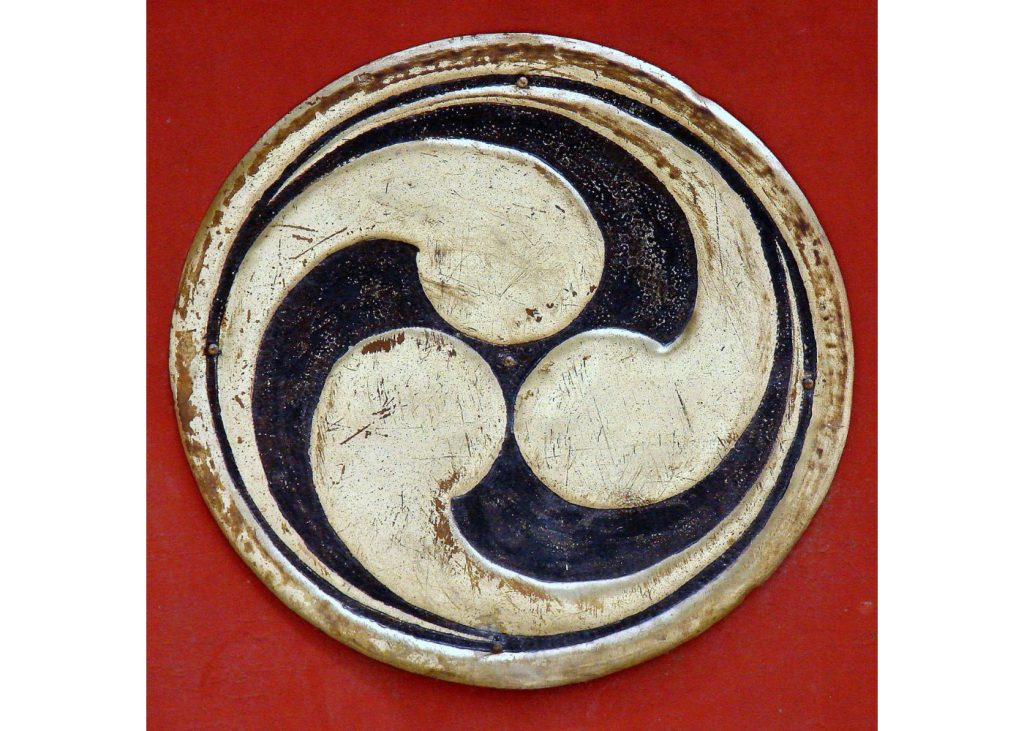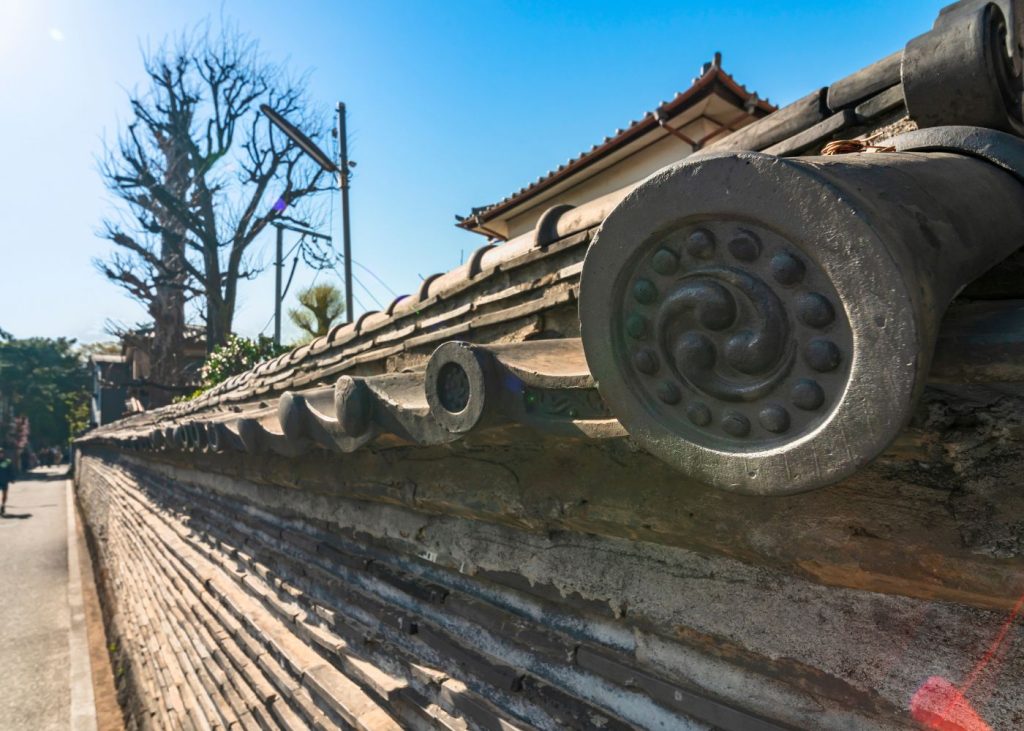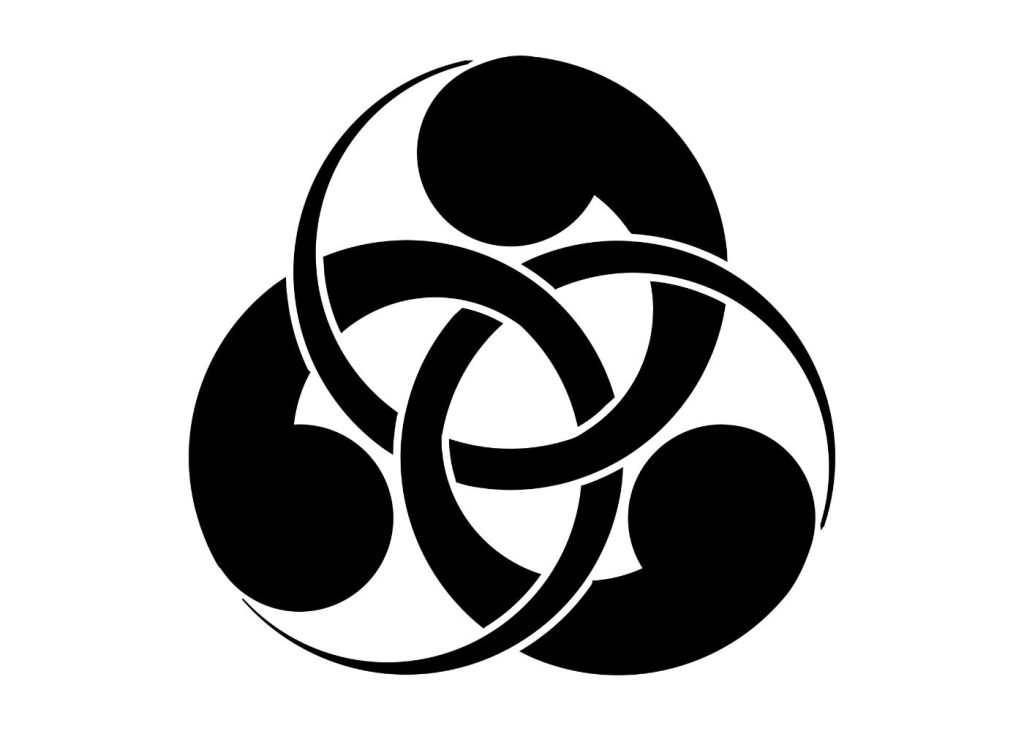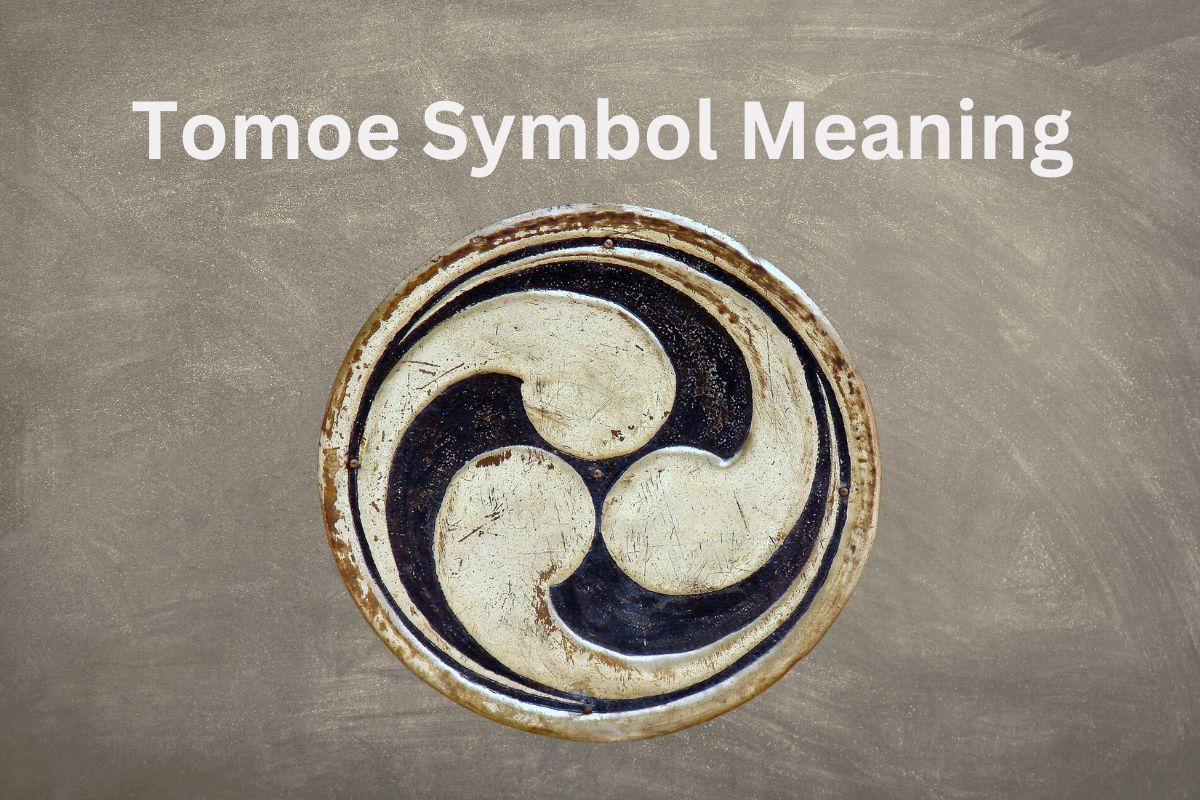The tomoe is a popular Japanese and Shinto symbol. The word tomoe loosely means comma. Mitsudomoe (mitsu tomoe) is a Shinto symbol with three commas. It's regularly used in Japanese manga, amine, and comics.
This ancient symbol has been in use for centuries. It’s associated with martial arts and samurais. The symbol is also found as household crests. Ancient clay works, stones, and jewels have been shaped into a tomoe symbol called magatama. These curved beads belong to prehistoric Japan.
Tomoe Symbol Meaning in Japanese Culture
Shintoism is an ancient Japanese religion. It may not be as common today, but the symbols are still popular and widely used. The tomoe is a Shinto symbol with swirling commas. It looks like the Chinese yin-yang and the Celtic triquetra knot.
Tomoe and magatama might’ve come from the ancient Daoism symbol. It’s called taijitu or known as yin-yang. The taijitu is used in Shintoism and Buddhism. Magatama is comma-shaped and became a religious symbol in ancient Japan. It represented many elements, including:
- A fetus
- Moon
- Animal tooth
- Energy, etc.
It was used as a good luck charm as well. The magatama and tomoe share the same appearance and symbolize protection, power, healing, spirituality, or cultural heritage. The tomoe is also used on Japanese badges of authority, such as family crests, or mon emblems.

Meaning of Japanese Name Tomoe
Tomoe is the Japanese name for a girl. It means a blessing or a friend. Currently, it’s an uncommon name. Tomoe is pronounced as TUW-Moweh. The word has its origins in archery from ancient times. The armguard on the left hand, worn by the warriors, was called tomo and written in kanji as 鞆.
Shinto Roots
Shintoism is a polytheistic religion. People worship many gods and spirits which reside in nature. It’s similar to other pagan religions with nature worshipers. Some call Shintoism an animistic religion for honoring natural elements. Kami-no-Michi, or the way of the gods, is an excellent description of Shinto. The religion was first followed in the 6th century BC but with roots in 6th century CBE.
Origin
There is nothing formal or written about Shintoism. For example, there’s no sacred text or an approved official version of the religion. It’s another indigenous/pagan/ancient religion with deep roots in the past. The Chinese and Buddhist cultures may have influenced Shintoism. It also shares a few similarities with Hinduism.
Shintoism relies on a simple principle: believe in Kami (the divine) and see it everywhere. Kami resides in spiritual beings and nature. The mountains, rivers, trees, and places have Kami and should be respected.
History
Shinto beliefs shaped Japanese sensibilities over the years and played a prominent role in politics. Some say that the Yamato clan established the Shinto religion to retain ownership of the lands.
The Kojiki (Record of Ancient Matters) and Nihonshoki (Chronicle of Japan) became the sacred texts of Shinto. They were written to legitimize the Yamato clan as the descendants of gods sent to rule the Japanese islands.
However, the name Shinto is derived from the Chinese shen dao. Shinto grew in response to the introduction of Buddhism from Korean lands. It expanded into Japan’s own religion, though Buddhism continued to be active. The National Learning movement in the Edo period (1600-1868) separated Shinto from Buddhism and made it popular.

What Does the Triple Tomoe Mean?
A single tomoe is a magatama. The tomoe is also found in twos (futatsudomoe), threes, and fours. The triple tomoe is the most popular sign and one of the Japanese family emblems.
The Japanese version symbolizes the three-fold division: man, earth, and sky. It can also represent the earth, heaven, and the underworld. The Buddhist version, Hidari Gomon, denotes the life cycle.
Tomoe Symbol in Manga, Anime, and Popular Culture
Manga and anime are two popular Japanese industries earning billions of dollars yearly. Anime (animation) belongs to contemporary Japanese culture and is a cartoon-based show. Manga is literature-based. It represents comics and cartoons drawn and read in a certain style.
Tomoe is an integral part of Japan’s culture. It’s commonly found in anime and manga as symbols on swords, samurai rankings, flags, eyes, and more.
For example, Naruto is a Japanese anime multiplayer online game with tomoe in Sharingan, Rinne Sharingan, and Rinnegan. Sharingan translates to mirror wheel eye.
It’s the Dojutsu Kekkei Genkai of the Uchiha clan in the game. The eye awakens different powers in the characters who wear it. Sharingan has four stages, representing the four tomoe symbols in Japanese culture.
You’ll find the tomoe symbol on drums, roofs, samurai flags, pendants, lanterns, protective charms, etc. People of all ages use it.

What is a Mitsudomoe?
三つ巴 Mitsudomoe or mitsu-tomoe is the triple tomoe pr a threefold comma design. It has three identical commas symbolizing the holy trinity (Japanese version). It has a man standing between the sky and earth, showing nature’s way of balance and protection.
Mitsudomoe implies that humans should live in harmony with nature. It can also be drawn like the triquetra symbol. Hidari-mitsudomoe is associated with Hachiman, the Shinto God of War and Wisdom. It is also a family crest of the Kuki clan.

The tomoe or comma is an intrinsic part of Japanese culture. It’s a spiritual symbol with varied meanings and uses. Mitsudomoe is the most used tomoe design and has been used as a business logo. Mitsubishi Group, which is an independent Japanese multinational company, has a logo designed similar to the visual representation of mitsudomoe.

